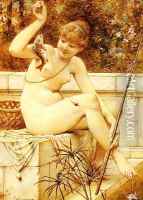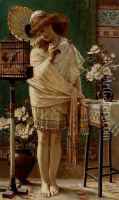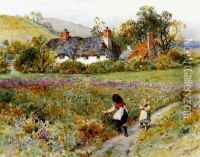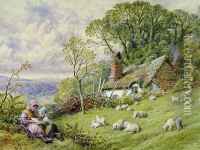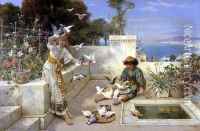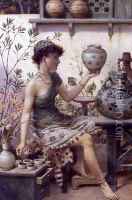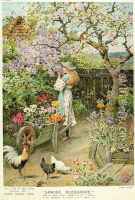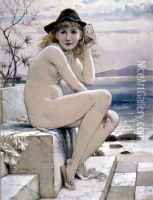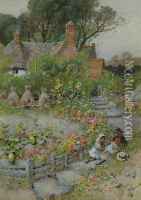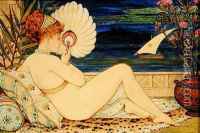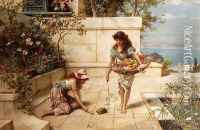William Stephen Coleman Paintings
William Stephen Coleman was an English painter and illustrator known for his detailed and delicate watercolors of flowers, birds, and butterflies, as well as genre scenes. Born on April 29, 1829, in Horsham, Sussex, Coleman began his artistic career as an apprentice to a stained glass manufacturer. This early experience with glass and light would have a profound influence on his later work, which is characterized by its luminosity and vibrant colors.
Coleman's talents were not confined to painting; he was also a skilled designer, particularly of porcelain. In the 1860s, he worked for Minton, a renowned ceramics manufacturer, where he designed pieces that were exhibited at the International Exhibition of 1862. His designs earned him recognition and awards, showcasing his ability to work across different mediums.
Despite his success with ceramics, Coleman is most celebrated for his natural history illustrations. He contributed to several important Victorian publications, including 'The Girl’s Own Paper' and 'The Illustrated London News', where his illustrations brought the wonders of the natural world to a wide audience. His work was meticulous, often based on close observation and scientific accuracy, which made them not only beautiful but also educational.
In addition to his illustrations, Coleman painted in oils and watercolors, exhibiting at the Royal Academy and other prominent British institutions. His watercolors of flora and fauna were especially popular, capturing the Victorian fascination with nature and the exotic.
William Stephen Coleman's contributions to art and illustration were significant during his time, and his works continue to be appreciated for their beauty and precision. He passed away on March 22, 1904, leaving behind a legacy of work that celebrated the natural world and demonstrated a remarkable versatility in art and design.

